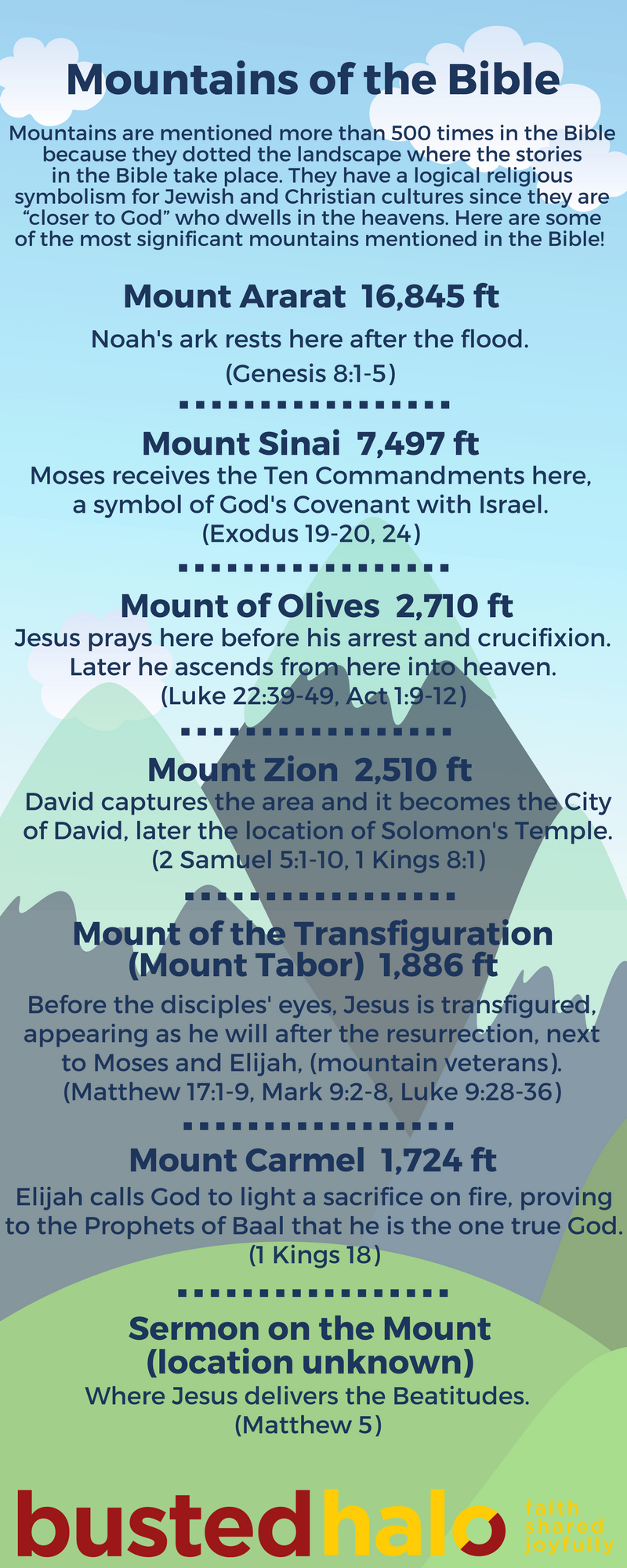Mountains are mentioned frequently in the Bible because they dotted the landscape where the stories in the Bible take place. As a result, mountains and hills are mentioned more than 500 times in Scripture. Mountains have a logical religious symbolism for Jewish and Christian cultures since they are “closer to God” who dwells in the heavens (as in the sky). As a result, God often reveals himself on a mountaintop in the text.
In the Old Testament, the mountains of Sinai and Zion are most significant. Mount Sinai is the place where Moses received the gift of the law, the Ten Commandments. Thus, Mount Sinai is a symbol of God’s covenant with Israel. Zion, to the south, is the location of the Jerusalem Temple. In the New Testament (Mark and Luke to be precise), Jesus appoints the 12 disciples on a mountain. In Matthew’s Gospel, Jesus delivers the Beatitudes in his Sermon on the Mount, conjuring an image of Moses who received the Ten Commandments on Mount Sinai. (Matthew’s mostly Jewish audience would immediately pick up on the comparison between Moses and Jesus.) Matthew, in particular, has six significant mountain scenes in his gospel: Jesus’ temptation (Matthew 4:8), the Sermon on the Mount (Matthew 5:1-12), a number of healings (Matthew 15:29-31), the Transfiguration (Matthew 17:1), Jesus’ final discourse (Matthew 24:3), and the commissioning of the Apostles (Matthew 28:16-20).
Perhaps the most significant mountain scene in the Gospels, however, is the Transfiguration of Jesus (Matthew 17:1-13). Jesus appears with Moses and Elijah, who themselves encountered God on the mountaintop in the Old Testament. The Transfiguration is the moment when the disciples encounter God through Jesus, and Jesus, in turn, is seen as the fulfillment of the law (Moses) and the prophets (Elijah).
Updated: September 2017